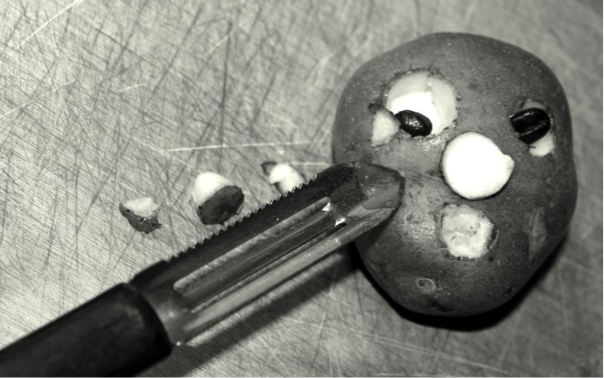|
By Lakshini Mendis
Did you know that acne is the most common skin disorder in the United States? Nearly 85% of people will experience acne at some point in their life, most commonly on their face, chest, and back1. Developing acne during puberty is almost a rite of passage, but there isn’t an age-limit to breaking out. And regardless of age, acne can sometimes impact your self-esteem and self-confidence.
Underneath your skin: What causes an acne breakout? Oil glands associated with hair follicles secrete a waxy substance called sebum, which moisturizes the skin and hair. However, when you have overzealous oil glands (for instance, as a result of the surge of androgen that occurs during adolescence), the excess sebum can trap dead skin cells inside the follicle. This forms a small plug called a comedo, which can cause whiteheads (when it is a closed bulge in the follicle wall) or blackheads (when the plug becomes open to the surface and melanin oxidization causes the skin to darken). A comedo is also the perfect hotbed for the aptly named P. acnes bacteria. Some strains of this bacteria can cause inflammation, which results in pimples. There are a number of factors that can play a role in exacerbating acne. They include natural hormonal fluctuations, medications (such as corticosteroids and anticonvulsants), family history, friction and humidity on the skin (for instance from a helmet), health conditions such as polycystic ovary syndrome, and stress2. What can you do? Now that we know what causes acne, here are some steps you can take to prevent or alleviate it: · Since a build-up of dead skin cells can lead to acne, wash your face thoroughly, twice a day, using a cleanser. Follow this step ritual by moisturizing with a product that is right for your skin type. You can also (gently) exfoliate your skin a few times a week. Make sure all the products are noncomedognic (ie. does not clog your pores). Remember, vigorous washing and scrubbing can irritate your skin and make your acne worse. · Use make-up that is oil-free and water-based. Avoid alcohol-based astringents, which strip your skin of natural moisture. · Hair-care products such as conditioner, shampoo, gel, and hair-spray can cause acne because oils from these products can seep into your skin (especially around your hair-line). Apply these products before you wash your face, or choose oil-free products, to prevent pomade acne. · Inflammation from sunburn can make your acne worse, so if you have to be out and about, use a good (oil-free) sun-screen. Try to use a sunscreen that only contains “lighter” chemical ingredients like avobenzone, oxybenzone, methoxycinnamate, octocylene, and zinc oxide. · Stress is thought to exacerbate acne by increasing the release of glucocorticoids and adrenal androgens3. Get enough sleep and exercise regularly to help cut down on stress. If you are experiencing emotional stress, confide in someone you trust and consider getting professional help. · To prevent scarring, do not pop, squeeze, or pick at acne. · There are now many effective over-the-counter (OTC) acne treatments. Products with benzoyl peroxide or salicylic acid can often clear skin, but keep in mind that it can sometimes take about six to eight weeks to see an effect. Consult a pharmacist to find a product that is right for you, and use the medication as directed. For persistent acne, which does not respond to OTC medication, see your dermatologist (earlier, rather than later) for successful diagnosis and treatment. For more information visit: the American Academy of Dermatology Sources: 1. The Burden of Skin Diseases 2005, Copyright 2005, the Society for Investigative Dermatology and the American Academy of Dermatology Association 2. Thompson, AE, Acne. JAMA. 2015;313(6):640 3. Williams HC, Dellavalle RP, Garner S, Acne vulgaris. Lancet, 2012; 379 (9813):361-372 
About the Author
Lakshini Mendis is a PhD student at the Center for Brain Research at the University of Auckland in New Zealand. Her project is focused on understanding the changes that occur in Alzheimer's disease. Lakshini is passionate about good science communication, and believes that it is the key to increasing scientific literacy in the community. She wants to help change the stereotype of females in science, and that’s why she signed up as the Lifestyles section editor at the Scientista Foundation. She also writes for HDBuzz. When she's not working, you can usually find Lakshini curled up with a good book, spending time with family and friends, or exploring somewhere new! Twitter handle: @MissMendis Comments? Leave them below!
0 Comments
Your comment will be posted after it is approved.
Leave a Reply. |
LIFESTYLE BLOGRead our lifestyle advice, written exclusively for pre-professional women in science and engineering. From advice about fashion, work and family balance, self, wellness, and money, we've got you covered! |
The Scientista Foundation, Inc. All Rights Reserved © 2011-2021 | Based in NY | [email protected]
The Network for Pre-Professional Women in Science and Engineering
The Scientista Foundation is a registered 501(c)(3) -- Donate!
The Network for Pre-Professional Women in Science and Engineering
The Scientista Foundation is a registered 501(c)(3) -- Donate!

